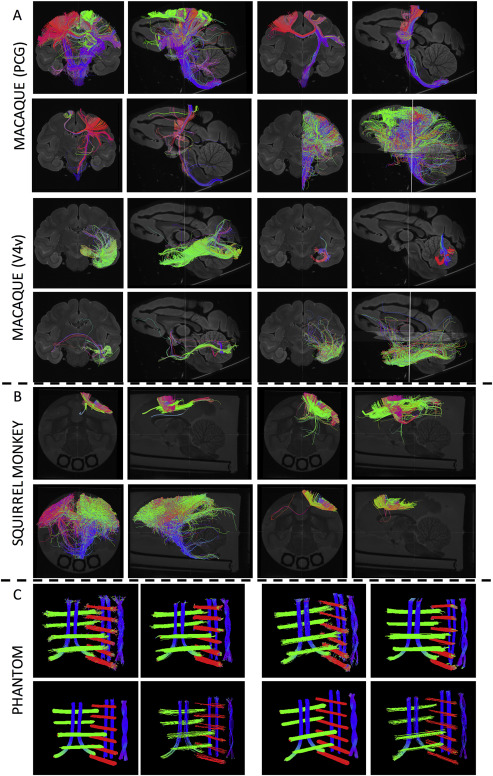Limits to anatomical accuracy of diffusion tractography using modern approaches
Kurt G Schilling, Vishwesh Nath, Colin Hansen, Prasanna Parvathaneni, Justin Blaber, Yurui Gao, Peter Neher, Dogu Baran Aydogan, Yonggang Shi, Mario Ocampo-Pineda, Simona Schiavi, Alessandro Daducci , Gabriel Girard, Muhamed Barakovic, Jonathan Rafael-Patino, David Romascano, Gaëtan Rensonnet, Marco Pizzolato, Alice Bates, Elda Fischi, Jean-Philippe Thiran, Erick J. Canales-Rodríguez, Chao Huang, Hongtu Zhu, Liming Zhong, Ryan Cabeen, Arthur W Toga, Francois Rheault, Guillaume Theaud, Jean-Christophe Houde, Jasmeen Sidhu, Maxime Chamberland, Carl-Fredrik Westin, Tim B. Dyrby, Ragini Verma, Yogesh Rathi, M Okan Irfanoglu, Cibu Thomas, Carlo Pierpaoli, Maxime Descoteaux, Adam W Anderson, Bennett A Landman. “Limits to the anatomical accuracy of diffusion tractography using modern approaches”. Neuroimage. 2019 Jan 15;185:1-11. doi: 10.1016/j.neuroimage.2018.10.029
Full text: NIHMSID
https://www.ncbi.nlm.nih.gov/pubmed/30317017
Abstract
Diffusion MRI fiber tractography is widely used to probe the structural connectivity of the brain, with a range of applications in both clinical and basic neuroscience. Despite widespread use, tractography has well-known pitfalls that limits the anatomical accuracy of this technique. Numerous modern methods have been developed to address these shortcomings through advances in acquisition, modeling, and computation. To test whether these advances improve tractography accuracy, we organized the 3-D Validation of Tractography with Experimental MRI (3D-VoTEM) challenge at the ISBI 2018 conference. We made available three unique independent tractography validation datasets – a physical phantom and two ex vivo brain specimens – resulting in 176 distinct submissions from 9 research groups. By comparing results over a wide range of fiber complexities and algorithmic strategies, this challenge provides a more comprehensive assessment of tractography’s inherent limitations than has been reported previously. The central results were consistent across all sub-challenges in that, despite advances in tractography methods, the anatomical accuracy of tractography has not dramatically improved in recent years. Taken together, our results independently confirm findings from decades of tractography validation studies, demonstrate inherent limitations in reconstructing white matter pathways using diffusion MRI data alone, and highlight the need for alternative or combinatorial strategies to accurately map the fiber pathways of the brain.
Keywords:
